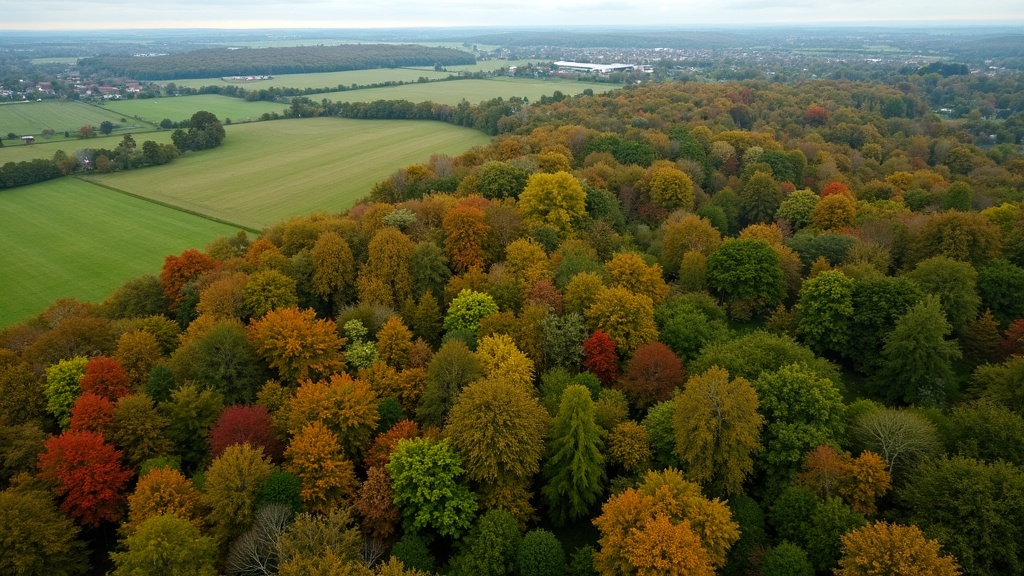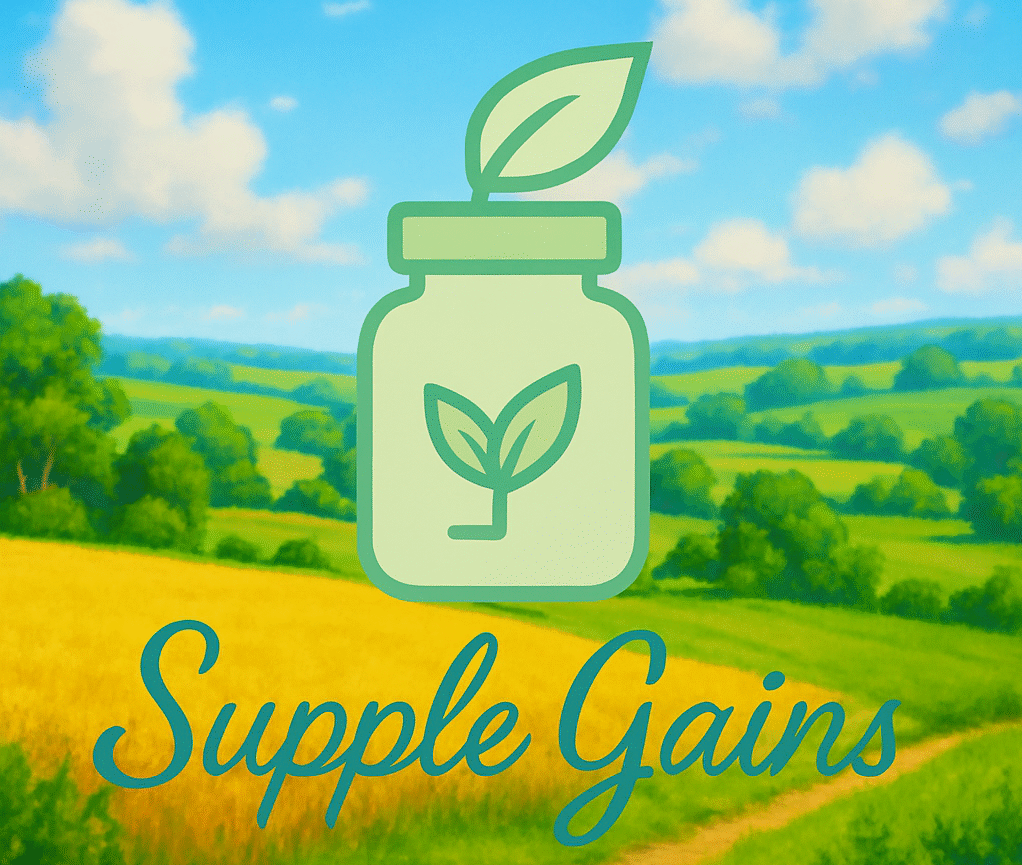Switching up what’s on my plate isn’t just about personal health.
It plays a huge part in the planet’s health too.
Deforestation is a topic I care about a lot, and I’ve found that our food choices are linked to it more closely than most of us realize.
Getting into plantbased foods is a practical step that can ease the demand for landhungry animal agriculture.
Fewer forests get cleared this way, and that’s a win for everyone.
Time to check out how this really works and why the impact is big enough to matter.

How Food Choices Push Deforestation
When I first dug into deforestation, I was honestly surprised by just how much of it connects to food.
Most deforestation, especially in the Amazon and other rainforests, is done to make room for farming.
It’s not just about growing crops.
In truth, livestock is one of the biggest drivers.
Huge expanses of trees are cleared for pastures or to plant crops (such as soy) that are mostly used to feed animals—not people directly.
The Food and Agriculture Organization (FAO) says farming is behind about 80% of global deforestation.
Creating pastures for cattle, pigs, and chickens, and planting the grains that feed them, gobbles up a lot more land and water than just growing plants for folks to eat.
Cattle ranching alone is a top reason the Amazon loses so much of its forest every year.
Crops like soybeans in Brazil often wind up in animal feed in countries far away, so the connection runs deep even if you aren’t eating Brazilian beef.
Why Plantbased Foods Help Forests
Choosing plantbased foods is a solid way to slash your “deforestation footprint.”
Plants need less land, water, and resources per calorie or gram of protein compared to animal foods.
The reason’s simple: plants turn sunlight and nutrients right into food, skipping the extra step of animals eating those plants and growing slowly over time.
Switching to lentils, beans, grains, nuts, and vegetables means the land needed is much less.
It takes as much as 20 times more land to get a gram of protein from beef than from beans. When lots of people start making that switch, the effect stacks up fast.
- Less Land Use: Plant foods are naturally less resourcehungry, so there’s less pressure to clear new land.
- Lower Greenhouse Gas Emissions: Producing plants leads to fewer emissions, and keeping forests standing keeps carbon stored safely in trees.
- Water Savings: Fewer livestock results in less water use for both animals and their feed crops.
Easy Ways to Get Into Plantbased Eating
If you’re already tossing in the odd meatless meal now and then, you’re doing great.
No need to switch it up overnight.
Replacing animal products with plantbased options works best as a stepbystep ride—maybe start with a few dinners, or shake up breakfast first.
- Try Meatless Mondays: Dedicate one day a week to plantpowered meals. It’s a lowpressure, fun gateway for trying new recipes.
- Switch the Protein: Beans, lentils, tofu, and tempeh can stand in for meat in dishes like chili, stir fry, or tacos.
- Explore Global Cuisines: Foods from places like India, Ethiopia, and the Mediterranean are packed with natural plantbased meal ideas.
- Go Big at Breakfast: Oatmeal, smoothie bowls, pancakes loaded with fruit, or wholegrain toast with peanut butter make easy swaps to kickstart the day.
Stirring up new recipes can be fun, and the internet is loaded with blogs or social accounts featuring plantbased inspiration.
Some apps help you track your meals or find local plantfriendly spots too.
What to Keep in Mind Before Making Big Changes
Altering your grocery haul can be a big help, but a few practical things are worth thinking through:
- Imported vs. Local Foods: Local, seasonal plant foods usually create a smaller environmental impact versus transporting food long distances.
- Processed Options: Some plantbased “meats” are heavily processed and come with their own environmental costs, including lots of packaging and long ingredient lists. Simple foods like beans, grains, and whole vegetables are usually your greenest picks.
- Balanced Nutrition: Get enough protein, vitamin B12 (try fortified foods or supplements), iron, and calcium. Mixing up your meals helps cover all the bases.
Reading Labels and Certifications
Look for products with trustworthy environmental certifications, such as Rainforest Alliance or Fairtrade.
Many companies now highlight “deforestationfree” sourcing, so picking foods with those guarantees matches your meals with your values.
Support Local Growers
Shopping at farmer’s markets or nearby stands means your food travels less and you often get to talk directly with the people who grew it.
This builds community while helping you make sense of where your food comes from.
Seeing Real Change With Every Meal
Eating plantbased options makes a real impact that reaches beyond your own table.
If you want to see the bigger effects, consider this:
- One study says a widespread switch to plantbased diets could cut land used by food by as much as 76% around the world (source).
- Every time you go plantbased, more forests stay standing, homes for wildlife remain, and more carbon stays locked away in trees instead of the atmosphere.
I like to track little wins—such as how much land and water are saved by choosing a plantbased meal versus one with animal foods.
Plenty of apps and online calculators help you plug in some meal info to get quick feedback on your footprint.
That way, you see how your swaps, added up with millions of others, protect forests all over the world.
Take Your Plantbased Habits Further
Once you’ve got the basic switches down, going a bit deeper can ramp up your plantbased impact for forests and the planet:
Batch Cook and Freeze: Having readytoeat plantbased soups, grain bowls, or sauces in your freezer means you’re set for forestfriendly meals even during a busy week.
Grow Your Own: Try a windowsill garden—which is fun and means fewer packages and food miles for your greens or herbs.
Host PlantBased Potlucks: Invite friends to try each other’s favorite greener recipes, and swap tips for making plantbased meals a regular thing.
Diversify Your Grains and Beans: Throw in options like millet, amaranth, fava beans, or blackeyed peas; supporting crop diversity lessens pressure on single crops and supports better soil health.
Experimenting in the kitchen keeps things interesting;
I’ve found roasting chickpeas, shaping lentils into burgers, or blending up cashew cream sauces builds my meal rotation and keeps things lively.
FAQs About PlantBased Eating and Deforestation
Here are a few of the most common questions people ask me:
Question: Does eating plantbased foods always cut down deforestation?
Answer:
For the most part, yes, but there are exceptions.
Crops like palm oil and soy for processed foods can still harm forests. Try to eat whole, locally grown foods, and check for ecofriendly certifications on packaged goods.
Question: Do I have to give up meat completely?
Answer:
Not at all! Every plantbased swap counts.
Even a parttime approach—a flexitarian ride—shrinks your impact on forests a lot.
Question: Where can I find plantbased recipes and tips?
Answer:
Check out online blogs, cookbooks, or YouTube channels for tons of ideas.
Many communities and libraries offer local workshops or recipe swaps too.
Question: Since so much soy is from far away, is it really sustainable?
Answer:
The majority of soy grown worldwide is for animal feed.
When you eat soy foods directly (such as tofu or tempeh), overall land use is much lower.
Look for products using sustainably sourced soybeans and check labels for certifications.
Wrapping Up
Your food choices send a strong signal, and swapping even some animal products for plantbased foods is a practical approach for protecting forests.
This switch helps your health, saves water and energy, and helps preserve more wild places for the next generation.
Each time you build a plantpowered meal, you set off a small but meaningful chain reaction.
Multiplied by millions, these shifts make a world of difference, keeping forests thriving and the planet a bit greener.
